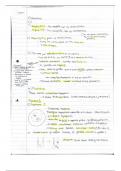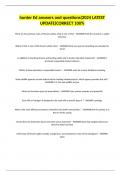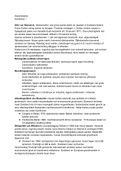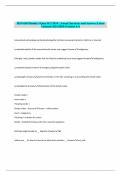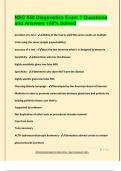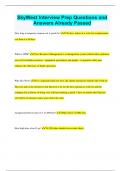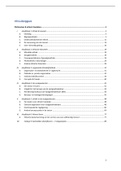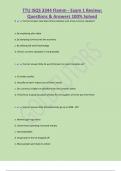Exam (elaborations)
FOOD MANAGER CERTIFICATION QUESTIONS & ANSWERS 100% CORRECT
- Course
- Institution
Table of Contents - ANSWERBefore You Begin Food Safety Introduction Be Clean, Be Healthy Keep it Cold, Keep it Hot Don't Cross Contaminate Wash, Rinse, & Sanitize Cook It & Chill It General Food Safety Equipment Selection & Maintenance Terminology As you prepare for the exam, keep these p...
[Show more]




